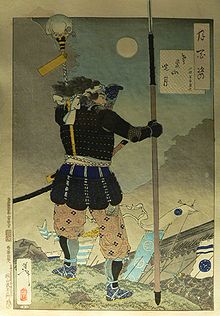Ihr Warenkorb ist leer


Sojutsu is a traditional Japanese martial art dating back to the region's early feudal period. While other styles of martial arts at the time focused primarily on hand-to-hand combat or the usage of swords, sojutsu was unique in the sense that it focused on the usage of the spear. Today, we're going to explore this traditional Japanese martial art, revealing five fun facts about it that you probably didn't know.
#1) Sojutsu Means 'Art of the Spear'
The word "sojutsu" is literally translated into "art of the spear." It's a fitting definition considering that sojutsu revolves around fighting with the spear, specifically the yari. Practitioners of sojutsu perform attacks including slashing, piercing and downward strikes, all while using the yari or a similar type of spear.
#2) Spears Were Preferred By Many Samurai Warrior During Feudal Japan
Sojutsu gained popularity during feudal Japan as many samurai warriors sought to own and use a spear instead of a sword. Traditional Japanese swords like the katana and wakizashi remained the most popular weapons among samurai warriors. But some samurai warriors still preferred spears over swords such as these because they were cheaper and required less training to use. In fact, most samurai warriors could simply practice sojutsu to improve their proficiency with the spear.
#3) There Were Once 450 Sojutsu Schools in Japan
Although it never reached the same level of popularity as kenjutsu or kendo, sojutsu was still a popular and widely practiced martial art in Japan. According to Wikipedia, there was once 450 active sojutsu schools in Japan. The number of sojutsu schools in Japan has since declined, though there are still a few dozen organizations that teach this centuries-old traditional Japanese martial art.
#4) It Achieved Peak Popularity After the Mongol Invasions
Sojutsu achieved peak popularity in Japan immediately following the Mongol invasions from 1274 to 1281. When the Mongols attacked Japan, they relied heavily on horseback divisions as well as spear-wielding infantrymen. The Japanese saw the effectiveness of these spear-wielding infantrymen. And while Japan was successful in warding off its Mongol invaders, they learned the power of the spear from their enemies, resulting in a newfound popularity for sojutsu.
#5) It Was Often Practiced With a Pronged Spear
The spear used in sojutsu, known as a yari, was often designed with a two- or three-pronged head. Rather than having a single point at the tip, for example, it featured two or three points. The actual blades were forged almost exclusively out of high-carbon tamahagane steel, allowing for a superior level of strength. The shaft of the yari, on the other hand, was generally made of hardwood that was covered in bamboo strips.